From Strategy to Execution: Choosing the Right Sustainability Operating Model to Unlock Profitable Energy Transitions
May 21, 2025
As companies and public organizations navigate an era marked by economic instability, rising tariffs, and global uncertainties, sustainability goals risk being sidelined. Yet, it is precisely during these turbulent periods that leadership in sustainability becomes most crucial.
Based on McKinsey's 2021 article on "How to organize for sustainability success," the structure and empowerment of the sustainability function is a strategic lever for progress—far beyond a simple compliance obligation.
McKinsey identified five sustainability operating models: centralized, decentralized, center of excellence, embedded within business units, and hybrid. Each model offers a different approach to managing sustainability efforts, but none guarantees success on its own. Ultimately, bridging the gap between ambition and tangible action depends more on leadership, clear accountability, and operational integration than on organizational structure alone.
The Best Conditions: Empowered and Integrated Execution
Organizations that successfully drive sustainability initiatives often share three key characteristics:
- A Clear Leader with Authority: A formally appointed individual, empowered to navigate swiftly and decisively through organizational complexities.
- An Agile Central Team with True Decision-Making Power: A streamlined, capable unit with the right level of authority—close enough to operations to act, yet sufficiently elevated to influence.
- Subject Matter Experts Distributed Across the Organization: Specialists embedded within departments, ensuring that expertise and action are closely aligned.
The Worst Conditions: Fragmentation and Stagnation
Organizations struggling to execute sustainability strategies often exhibit these traits:
- Ambiguous or Superficial Roles and Responsibilities: Pretending clarity exists without real-world validation through results.
- Resistance from Entrenched Interests: Leaders or groups clinging to outdated models and protecting legacy practices.
- Vendors Prioritizing Self-Interest Over Innovation: Partners more invested in preserving their status quo than advancing client outcomes.
These dynamics are not limited to the private sector. Public institutions, facing similar economic pressures and growing demands for sustainable action, are equally at risk of falling into these organizational traps.
Dan Boucher, vadiMAP's chairman and co-founder, emphasizes the stakes:
"In a context where economic pressures are intensifying, it is essential to include public institutions in the conversation about sustainability leadership. Governments will deploy billions into infrastructure to offset economic risks, but without disciplined management and clear accountability, these investments risk being diluted. We have seen firsthand that without strong operational leadership, even the most well-intentioned projects can falter. Now more than ever, leadership must rise above structures and ensure that sustainable outcomes are not left to chance."
The Value of Retrofit Intelligence in Portfolio Management
Regardless of whether an organization operates through a top-down directive or is grappling with decentralized decision-making, one constant remains: the potential of building retrofits to drive measurable sustainability gains. However, identifying the right interventions across diverse assets requires more than goodwill—it demands structured analysis and strategic foresight.
Solutions like vadiMAP support this need, offering:
- Prioritization engines that rank buildings by opportunity, urgency, and financial viability.
- Scenario planning tools that incorporate fluctuating energy prices, climate variables, and operational dynamics.
- Role-specific dashboards that enable decision-makers—from CFOs to facility managers—to visualize and act on insights.
While vadiMAP is one example of such a solution, the real priority is ensuring that organizations equip themselves with robust, scalable tools capable of turning sustainability goals into operational reality.
Conclusion
The structure of your sustainability team can either accelerate or hinder your energy transition journey. Yet ultimately, it is empowered leadership—not structures alone—that unlocks meaningful progress.
Even for organizations with less-than-ideal setups, strategic action remains possible. With the right leadership mindset and the support of intelligent solutions, the path to profitable and compliant energy transition becomes clear.
Ready to rethink your roadmap? Start with your buildings. Start smart.
Reference:
McKinsey & Company, "How to organize for sustainability success," June 2021

